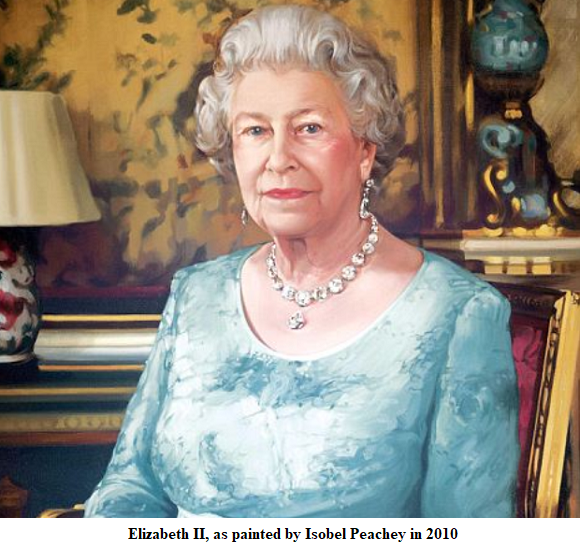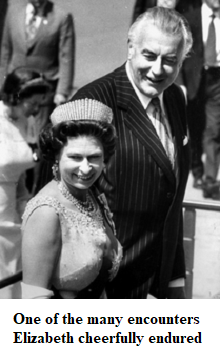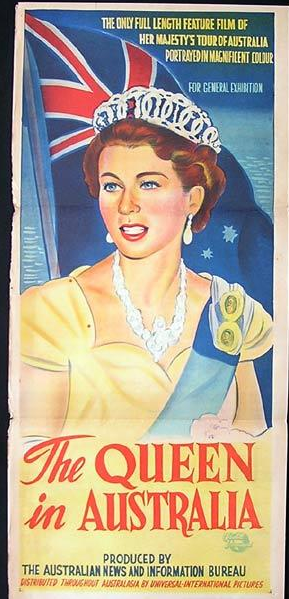
On Sunday, bells will ring from churches throughout her united kingdom; a 41-gun salute at midday will disturb the peace of Hyde Park in London, with a further 21 guns in Windsor Great Park and 62 guns at the Tower of London to mark Queen Elizabeth II’s seven decades as sovereign. It is already six-and-a-half years since she broke the record of the longest reign by a British monarch formerly held by Queen Victoria (63 years and 215 days). Of course, this Queen wants no fuss. The anniversary of her accession is an unavoidable reminder of the early death of her beloved father. So it will be business as usual.
It was evening of February 5, 1952, at Tree Tops Hotel in the heart of the Kenyan forest, when Elizabeth Windsor climbed a mgugu tree as a princess and the following morning came down as a queen. She and Prince Philip were in Kenya en route to Australia. On February 6, she was watching the sun rise from a platform in the trees as an eagle soared above them – it was thought that, at that moment, George VI, died in his sleep at Sandringham.
A day later, the 25-year-old monarch arrived in London, dressed in black, and descended the stairs of her plane to be greeted by Prime Minister Churchill, who had served as a soldier in the reign of her great-great grandmother, Victoria. Her youth and composure prompted hopes of a new era — not Victorian but a second Elizabethan Age. Interestingly, a tree featured in the accession of Elizabeth I too. The first Elizabeth, also twenty-five, sat beneath an oak at Hatfield, and when told she was queen, replied, “This is the Lord’s doing, and it is marvellous in our eyes.”
Her longevity and constitution, reminiscent of her remarkable mother, continues to amaze. Elizabeth is now the longest reigning monarch on earth. In just over four months she will have beaten Thailand’s King Bhumibol’s reign (from 1946 to 2016). The next to beat is Louis XIV, who ruled from 1643 to 1715 (72 years 110 days)
While contemplating the Sun King, it was said of Queen Victoria and her son (eventually Edward VII), “The Queen continues to reign, and reign and won’t let the son shine.” It might be said of her great-great granddaughter, Elizabeth, “The Queen continues to shine, and shine and won’t let the son reign.” But if one looks right back to 1947, it is not difficult to see why she feels bound to retain the reins and make her septuagenarian son wait a bit longer.
The Princess had spoken from the heart four years before she succeeded, again in Africa, on her 21st birthday. “I declare before you all that my whole life, whether it be long or short, shall be devoted to your service and the service of our great imperial family to which we all belong.” Seven decades on, it is universally agreed that  Elizabeth has been true to her word.
Elizabeth has been true to her word.
She has spent most of her 25,568 days doing her duty. She welcomed the Ceausescus as house guests to Buckingham Palace; she has shaken the hand of Martin McGuinness; she has hosted Paul Keating to a barbeque at Balmoral; listened to Margaret Thatcher once a week for 11-and-a-half years; and even held hands with Tony Blair under the Dome to mark the new Millennium. This monarch has been a slave to duty.
While she sounded so certain and determined in 1947, Elizabeth’s destiny had only dawned in December 1936, when her uncle, Edward VIII, abdicated to marry Wallis Simpson, hoisting her hesitant, apprehensive father onto the throne. When a footman brought the news to the young princesses that their beloved papa was King, Margaret asked, “Does that mean you will have to be the next queen?” “Yes, someday,” Elizabeth replied. “Poor you”, countered Margaret. Biographers claim that every night thereafter Elizabeth prayed for a brother.
That prayer was not answered but she was able to marry, in 1947, Philip Mountbatten (born Prince Philip of Greece and Denmark) the man she had fallen in love with at thirteen. When asked what his job was, Philip always answered, “to support the Queen” and, for all his gaffes and restlessness, he, too, was true to his word.
Despite the hopes, it was never to be a New Elizabethan Age. The fabric of Britain was still rent by the Second World War and as it recovered, Europe emerged and the Empire crumbled. But what arose from the remnants of the empire was the Commonwealth and its survival, against extraordinary odds, is one of the Queen’s greatest achievements.
 To keep that widespread family connected, she travelled. In fact, no one has travelled as far, so often and for so long — from her first trip abroad with her parents in 1947 to her last — to Malta in October 2016.
To keep that widespread family connected, she travelled. In fact, no one has travelled as far, so often and for so long — from her first trip abroad with her parents in 1947 to her last — to Malta in October 2016.
The Commonwealth has, against all odds, survived prime ministerial sackings, Fijian coups and Ugandan and Zimbabwean dictators.
It is 68 years since her first Commonwealth tour as Queen, including, still memorably, to Australia. It is said that three-quarters of the country’s population of 9 million saw the Queen in 1954. She visited 70 towns in 58 days. It must have been hell.
Revisionists delight in replaying then-prime minister Robert Menzies’ paean to his sovereign at Parliament House in 1963: “I did but see her passing by, and yet I love her till I die.” But the opposition leader, Arthur Calwell, was just as warm in his address. They were simply reflecting the national mood. The country was mad for the Queen and Duke.
One can expect a tribute from her 15th Australian prime minister, who was born sixteen years into ERII’s reign. Any hope of Menzien lyric or Whitlamesque wit is bound to be dashed, but one would hope it might be more eloquent than Mr Morrison’s “You were quite the hit” when he was received by the Queen at Windsor last year.
It is remarkable that Elizabeth remains Queen of Australia. Prince Philip could not believe the outcome of the referendum in 1999. On hearing the result, he reportedly burst out, with characteristic bluntness, “What’s the matter with these people? Can’t they see what’s good for them?”
No one could deny that the personal qualities of the Queen – her steadfastness, sagacity and discretion – played a part in the plebiscite’s defeat, but also to blame was the model offered as a replacement. The alternative was a president appointed by parliament. But many republicans wanted an elected president. Had that been the option in 1999, we might have already lived through the presidencies of Dick Smith and Eddie McGuire.
In her 70 years on the Australian throne, our sovereign has visited 16 times – an average of once every four years. Considering the breadth of her realms, it has been an Olympian effort. But is a time-share monarchy enough? Her majesty’s life is a British one – she must have spent 80 of her 95 years in England and Scotland. Her family, in particular her heirs, have visited regularly and kept the flame alive. The Prince of Wales’s affection for the country that (it has been said) made a man of him is genuine and undimmed.
The only unsettling issue has been to see his (otherwise model) son and heir, Prince William, attend the Rugby World Cup unabashedly supporting Wales. Of course, as their Patron, he was no doubt obliged to do so. Now his peerless consort, Catherine, has been appointed Patron of English Rugby.
Many may say “Well, after all, it’s only sport” but these primal skirmishes underline the fragility of multiple sovereignty. Perhaps TRHs should be advised not to accept these divisive patronages; they highlight the competing loyalties inherent in the model we have. William and Catherine are, after all, destined to be King and Queen of Australia too. With a shrinking Royal Family, surely they have sufficient causes and endeavours to patronise?
These slight cracks can be fixed and, in any case, while they might make one question the system, they do not reflect on our reigning monarch.
May she live at least long enough to congratulate herself on hER centenary.
Mark McGinness is a frequent contributor
 Sign In
Sign In 0 Items (
0 Items ( Search
Search










Thanks Mark. Good piece. God Save Our Gracious Queen & Long Live Our Noble Queen, say I.
It’s my hope that she outlives Charles . A guy can dream .
Great memories of flag waving in 1954 as the Queen passed by in South Grafton as a seven year old.
Long Live Our Gracious Queen – the National Anthem at our assemblies.
I, then 14, was among the long line of school children waving enthusiastically as the Queen was driven by. I’ll bet that everyone of believed that her smile was directed at, and for, us personally.
Looking back through all those years, it still astounds me that a republican movement has managed to develop and survive, if not actually thrive, in Australia when all the available evidence seems to confirm that there is no better system of government than that which we already have.
1954, it was another Age then. The Queen’s ‘complexion’ obsessed not only the girls but the boys, for it was much talked about in the press and on the radio. No TV then. I was eleven and in first year high school. I recall how we all practiced curtseying in case she stopped to talk to us. And then after waiting in the showground on a hot day the car with the two of them standing in it waving just swept by quickly.
There wasn’t even time to check her complexion, let alone curtsey with my best ballet balance.
Her Maj is, of course, completely admirable. But will the Royals keep out of politics or continue on their merry path of climate obsession, and become seen as complicit when the lights and heat fail?
They play politics at their peril. I’m surprised history hasn’t taught them that.
Thank you Mark. A fitting article to an exelpary and inspiring life of duty and service. One of my most prized possessions is my commission which bears the name and cypher of “EIIR, Queen of Australia.” May HM continue her reign securing our commonwealth for years to come.
I think that Charles will curb his tongue when he becomes king. There’s a vast difference between the freedom to speak of Charles the Prince and Charles the King. Of course, the mischief-making media will continue to provoke some sort of response, or will simply invent “quotes” to try to discredit him, if only by fatuous comparisons with his sainted mother, but they can and should be safely ignored. I’m pretty confident that our constitutional Monarchy will survive and see out the FitzSimons and Turnbulls of this world.
Good comment Doubting Thomas. I know he is wrong on the whole global warming nonsense, and he does a lot of getting around talking about it because, I think, he isn’t King and can get away with it. He is also wrong on the comment he made years ago about his potential future coronation vows, I think around the time he was doing a lot of getting together with various Islamic rulers, particularly in Saudi Arabia from memory, and he loves dressing up in Arab native gear….a bit like Lord Byron. He said he would change the words “Defender Of The Faith” to just defender of faith. This is just plain silly appeasement, and he should have none of it, as it is definitely neither helpful, nor necessary. Having said that, a strong sense of Duty and loyalty to the Crown he will wear is what is called for, and I think he has it, and will be a bit like Henry V and put all that devisive stuff behind him, knuckle down & be a good King. I certainly hope so anyway…..much, much further down the track, in the fullness of time of course.
I was 16 when the queen and Phillip came to Australia. I watch their royal train pass through St Marys station, 30 miles west of Sydney, with them on the observation platform giving us a wave. Something I will never forget.
Hagiography is normally only undertaken after someone’s death.